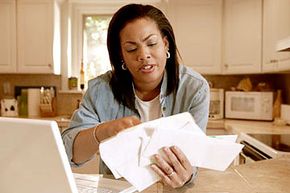Thanks to the growing popularity of online banking, putting pen to check may become a relic of the past -- like the bag phone and brick-and-mortar movie rentals. From banks and corporations offering electronic bill pay to bill-pay enabled software and specialized bill-pay Web sites, writing checks just got mobile.
Now, instead of sorting through paper bills delivered by mail carrier, then balancing a checkbook, and writing and mailing checks, consumers can track debits in real-time, electronically budget future payments and transfer funds to pay bills sans paper -- which can be as beneficial to one's long-term organizational habits as it is to the environment. And more people are coming on board: A recent study revealed more than 64 million households pay at least one bill online [source: Bell] and, according to a report by the Federal Reserve System, electronic payments now exceed two-thirds of all non-cash payments.
Advertisement
Paying bills online, however, is more than just a streamlined version of a traditional method. It also offers record-keeping benefits, thanks to the ability to generate online reports and search transaction histories. Forgoing paper, as well as the carbon footprint required to deliver it to one's home, has obvious environment-preserving benefits. If one in five households switches to electronic payments, statements and bills, it could save an estimated 1.8 million trees annually [source: PayItGreen.org].
Unfortunately, if you've joined the masses dispersing the fruits of their labor through online bill pay, there's also cause for alarm. With all this convenience comes risk -- both real and perceived. Even tech-savvy bill payers battle fears about privacy infractions and identity theft. Others have nagging worries that spyware may secretly be installed to record every keystroke (including passwords). Still more wonder if fake Web pages -- that look identical to a bank's Web site -- might be used to intercept their user information.
Still, there's mounting evidence that paying bills online may actually reduce the risks of identity theft and related fraud. Discover why on the next page.
Advertisement

